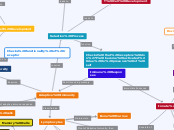作者:Chad Herbst 7 年以前
3297
Immunology Concept Map

作者:Chad Herbst 7 年以前
3297

更多类似内容
DN4 to DP
Rearrange multiple times
pTalpha
Immature B Do light and heavy chain produce functional binding site?
Many rearrangements
Small pre-B cell stage
Long-lived memory cells
Short-lived effector cells
CCL21 and CXL12
Integrins
LFA-1
Chemokines
CCL21
Selectins
L-selectin
Anergent
CD28: B7
IL2 binds to IL-2R
Proliferate
Cytokines tell cell what to turn into
CD28-B7
MHC to TCR
Negatively selected B cell
Apoptosis
affinity for antigen
T cell Help
B cell cross linking
Memory cell
Isotype Switching
T Cells
Somatic Hypermutation
Point Mutations
Selection
Anchor Residues
Which peptides bound to MHC
alpha-2
Size Restriction
8-10 Amino Acids
CD40
antigen
Cytoplasmic signaling receptors
Lysis, opsonization, inflammation
Membrane bound signaling receptors
Stimulate phagocytosis
Membrane bound phagocytic receptors
Sense potential pathogens and initiate inflammatory response
Free receptors in serum
Sense intracellular pathogens and initiate inflammatory response
Fluid enters site to attack pathogen
Foreign invader notice
More cells into area of need
Increased heat up regulates immune response
MHC present self antigen
Any in thymus, DCs, macrophages
Throughout thymus, mostly corticomedullary junction and medulla
Recognize self MHC
Lives
Dies
No receptor editing
Thymic Epithelial Cells
Thymus
Cortex
Double Positive
Negative Selection
If responds to self cells: either apoptosis
Receptor Editing!
Any in bone marrow
Bone Marrow
B cells that bind soluble antigens within bone marrow
Immature B Cell
Positive Selection
No Receptor Editing
FDC's
Positive life signal, otherwise die in 3 days
Secondary Lymphoid Organ
B Cell Follicle
Immature to Mature B Cell